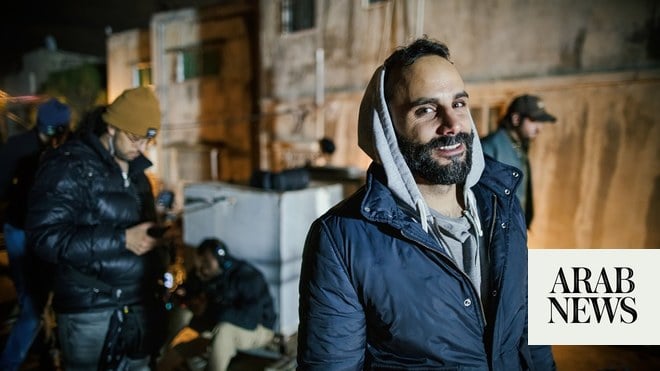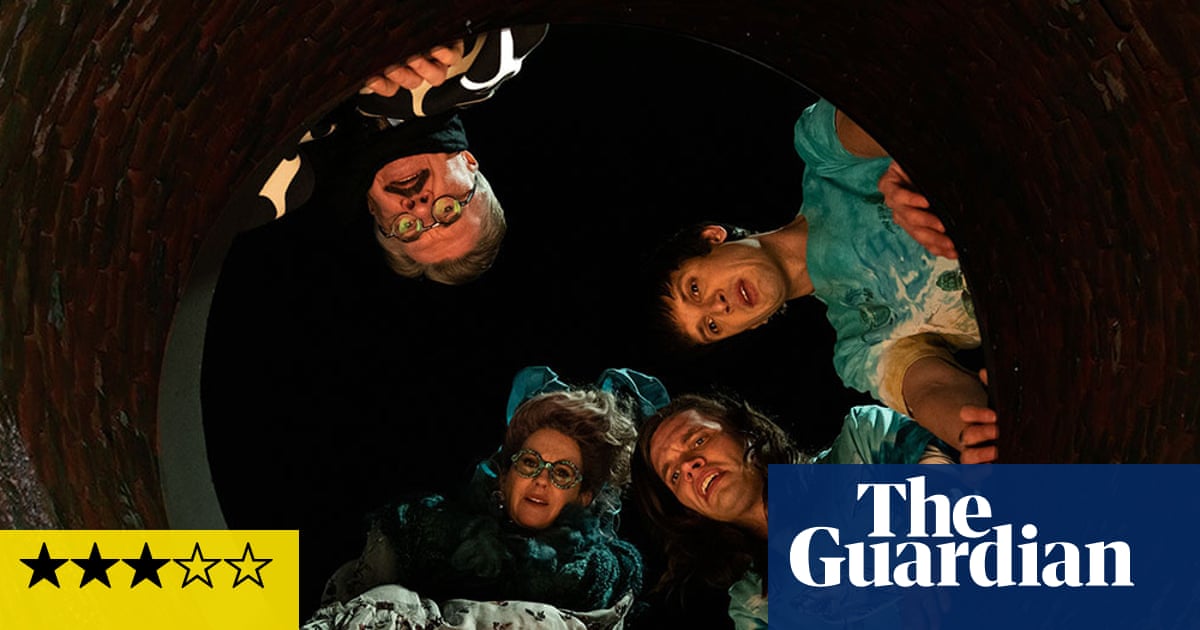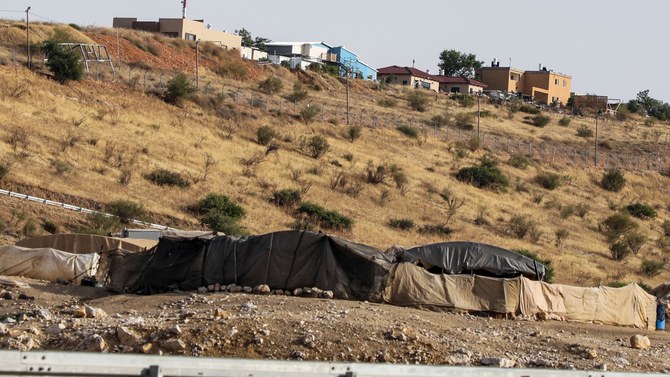
In vino veritas, goes the old proverb, but the truth about truth is that it can come from any sort of alcohol.
At The Roaring 20s, the Vegas dive bar that sets the scene for Bill and Turner Ross’s ingenious, Sundance-wowing cinematic boundary-blurrer Bloody Nose, Empty Pockets, the motley patrons find profundity in beer, whiskey, gin, rum, vodka – really everything except wine, come to think of it.
Over the course of one day, from the grizzled early birds sauntering in at 11am to the hardy souls staggering out at last call around four in the morning, this collection of eccentrics dispense sozzled absurdities and pearls of crumpled-up wisdom. The dingy, Christmas-light-lit interior contains a social ecosystem bustling with energy, and because the film has pulled up a seat at The Roaring 20s on its last day of operation, there’s a sense of the elegiac as well. In the most unassuming location, we watch life and death pass us by. We watch that, and in a more immediate sense, we watch everyone getting good and plastered.
The film-making Ross brothers have logged countless hours in bars like this, beholding agony and ecstasy while getting progressively drunker. As lifelong New Orleans natives, they have an innate sense for the grubby poetry of these spaces, where communal joy flirts with dead-end stagnation. That friction forms the genesis point for the liquored-up truth that the Romans were talking about, a boozy enlightenment that the Ross boys set out to capture in their film.
They liked the “bizarre backdrop” of Vegas as a “manifestation of American excess,” Bill says, videochatting from the brothers’ office in New Orleans. “We’d been spending time on the edges of Fremont Street, which was really affected by the financial downturn. The recession hit Vegas hard. If you look at postcards from midcentury, this was where great motels and casinos and bars are. They were filled with people not seeking the decadence of Vegas, but people pushed out of the city and out of the American dream.”
“You’re sprawling outwards,” Turner adds, “leaving the place that people come to visit and getting into a much more authentic experience. Oh, shit, this is some humanity.”
The symbolism of Vegas was perfect, but the locations they scouted weren’t. They couldn’t find what Turner calls the “just-right Goldilocks bar” of their dreams, and so they started searching New Orleans for “a space that wouldn’t drain the meager funds” they had. Their temple to the camaraderie of drink was hiding across the Mississippi River and past the West Bank, in the suburb Terrytown. They could shoot some exteriors up in Vegas to show the assorted characters at home after calling it a night (the brothers got hours of footage to this effect, which, much to their chagrin, only takes up a few minutes in the final cut), but everything else could be done in the Big Easy.
Here’s as good a point as any to mention that not only is The Roaring 20s not in Vegas, but it hasn’t even closed. The film is unscripted, the actors are non-professionals (with one noteworthy exception), the drinks and joints and acid tabs are all too real, and the camerawork hews to the verité style of direct-cinema documentary. But the Ross brothers’ unique approach blends elements of non-fiction and narrative, a distinction that they don’t find all that useful to begin with.
“We came to realize that it’s not, ‘Hey, Bill, I have an idea for a documentary,’” Turner says. “It’s more like, ‘We have this idea with a space, a series of images, a story that we want to tell, a framing device, an underwriting ethos.’ We’re not constrained about how we’re going to do that. We knew that this Vegas framing device would be intrinsic to what we were doing, but we needed the ideal stage. Because we live here in New Orleans, only after many trips to scout Vegas and cast out there, we realized we had some of the best resources in our own back yard.”
Those resources included the cast, assembled through hundreds of interviews across dozens of low-key casting sessions at area watering holes. Bill and Turner would post up at the bar and make conversation with “whoever felt like talking with us,” and along the way, they rounded up the sort of colorful figures that bring personality to a good dive. There’s a black military veteran, brought to tears by governmental neglect for former soldiers; an Albert Einstein lookalike who successfully outdrinks everyone in the house; the singular Pam, a rollicking bon vivant liable to flash her ”60-year-old titties” once she’s got a few in her; and Michael, the only trained actor of the bunch. He illustrates the blurring of reality and artifice, a fixture of the local theater scene portraying an out-of-work version of himself, clinging to the bar as a second home he’s about to lose.
“We ask ourselves what the best way to tell this story will be, and how we can access deeper truth,” Bill offers. “If we have to arrive at that by different means, that’s fine. Everything’s a fucking documentary. Some people perform plays in front of the camera. We’re going about it slightly differently.”
They don’t want to get caught up in semantics, when everything they do pursues the same higher purpose as any other work of art. “Something profound happened in there,” Turner says. “Even if pieces of it are framing devices, all films are constructions. It doesn’t negate the humanity that these people shared, nor does it negate the experience you have as a viewer connecting to it. No classification can erase that.”
Those distinctions took shape for a reason, however; no one wants to feel duped, like they mistook something staged for something organic. “We can have the heady conversation about what that means in the logistics of genre,” Turner continues. “The best conversation I’ve had with someone who was a bit disgruntled in that way went, ‘Wow, that movie was great, but that wasn’t real?’ And I told him, ‘Of course it’s real. Did you have a response to the film? That response is real.’ This resonates with viewers just like it resonated with the people in the film. Their reactions are genuine, even within the paradigm we set for them.”
This unorthodox method – find the right people, put them in the right bar, allow everyone to get as lubricated as they like, and let the cameras roll over two 18-hour days – could only work under the proper conditions. First and foremost, they ensured everyone’s safety, providing transportation home along with some sober-up food for all tipsy parties at the end of the night. They provided a soundtrack, albeit reluctantly. “We tried to film it without the jukebox on for audio purposes, so editing would be easier,” Bill says. “But after about 20 minutes, everybody mutinied against us. ‘This ain’t a bar without music!’ They took over, and now that it’s baked in, it’s so much a part of the film.”
For the record, even they aren’t totally clear on how their shoestring production managed to get away with using a stacked playlist of classic rock, pop and contemporary top 40 hits spanning Kool and the Gang’s Celebration to the platinum record du jour by The Weeknd. “We had to pay for some of this stuff,” Bill says, “but I don’t want to get too into it, because I don’t know how it all works. It’s better to build a team of bright people around you who enjoy doing the things you’re not good at, like understanding fair use law. We have people who look after the execution on the back end, and we caused them endless sleepless nights.”
The right music was essential to fostering “a womblike space that people can hide in,” as Bill puts it. By exerting control over some elements of the environment, they could create somewhere that felt natural and honest “We all have a space like this in our lives, somehow,” he says. “Everyone who sees this has a bar like that, or they know a person like someone in the movie.” Once they’d completed a three-year editing process that saw them trimming from a four-and-a-half-hour cut, Bill and Turner had assembled a work of immense congeniality, the filmic equivalent of everyone yelling your name in greeting when you return to your regular haunt. It’s a salute to the good times as they wind down, a sending-off party we’re invited to join.
“We want people to find this film in whatever way they want, but I love the image of someone watching this under Christmas lights with a tall drink,” Turner says. “Benh Zeitlin [who receives a special thanks in the credits] sent it to one of his guys, and he doesn’t smoke anymore, but he bought a pack of cigarettes and a case of cheap beer at the corner store, and he and his girlfriend got fucked up while chain-smoking during the whole thing. He said he thought he was blacked out by the end of it. That’s one way to do it!”
The film concludes on a melancholy note informed by Turner’s experience seeing Eugene O’Neill’s heart-rending play The Iceman Cometh at age nine. Even as a boy, he was moved by the quiet melodrama of the average bar, in which shooting the breeze can provide cover for baring your innermost self. Whether through the filter of a buzz or through a director’s tinkering or through seemingly meaningless chatter, whoever’s sitting around the taps can tap into tragedy, hope, and of course, truth.
“What I realized as a kid,” he says, “watching four and a half hours of drunks at a bar, was that there was something else going on there. It was a deeper stories of pipe dreams and the stories we tell each other and the stories we tell ourselves. We find these places of shared solace, and the film asks why. At a time of division, where’s the last place we can come together between different ideologies?
“It’s about what we say to each other when we can’t say what we mean. It’s about sharing conversation and sharing ourselves. It’s about how we relate to each other.”
Bloody Nose, Empty Pockets is out in the US on 10 July and the UK at a later date











